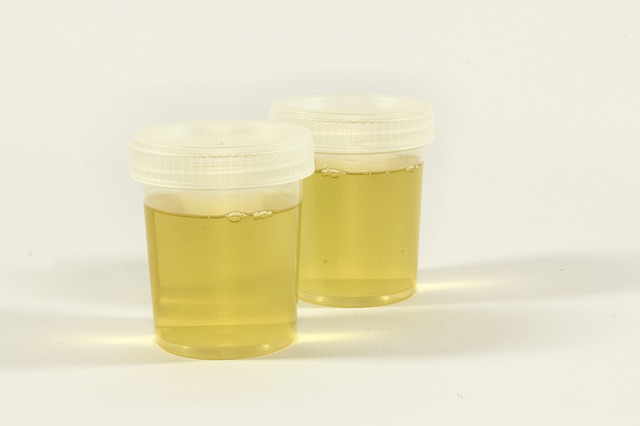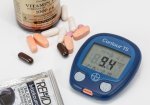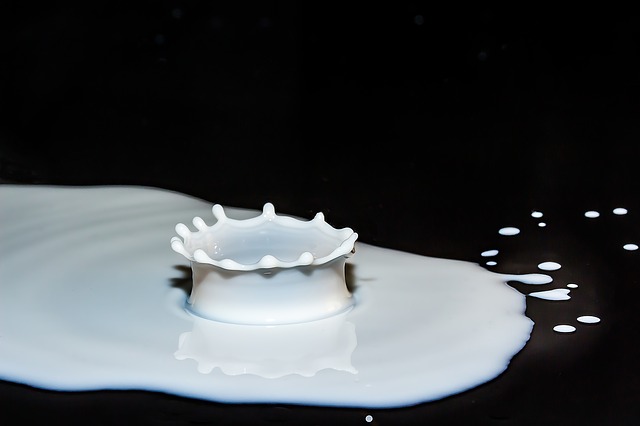Cadmium and Hypertension, What You Need to Know
A correlation exists between Cadmium and hypertension. This has been proven by science supported by convincing evidence. The scientific symbol for Cadmium on the periodic table is Cd.
Not only does Cadmium cause blood pressure to rise, it is also carcinogenic. Carcinogenics are known to cause cancer in people sufficiently exposed to them. One such cancer that is caused by Cadmium is endometrial cancer, particularly affecting women.

What Is Cadmium and What are its Sources?
Cadmium is everywhere!
As a naturally occurring metal found in the earth's crust, the Agency for Toxic Substances and Disease Registry (ATSDR) states that Cadmium has traces in soil particles and rocks. Consequently, there are few places on earth where humans live where Cd cannot be found. In addition, Cadmium is also found in greater quantities in zinc ores.
Following many decades of zinc mining, today huge quantities of Cadmium are found in zinc byproducts and also routinely recovered from used nickel-Cadmium batteries. In this regard, Cadmium remains an important component in nickel-cadmium (Ni-Cd) rechargeable batteries. Considering the widespread use of batteries, it is not an exaggeration that many people have inevitably come into contact with Cadmium at one point or another.
Consequently, since someone must mine the metal and make the batteries, the biggest section of the population that is at a greater risk of exposure to Cadmium are those in the mining and construction industries. This is refereed to as occupational exposure. In the United States alone, an estimated 300 000 workers are exposed to Cadmium.
A valid point often overlooked is that the world wide surge in demand and use of batteries has also ensured that the ordinary population over and above those working in the manufacturing of the batteries are exposed to a greater risk of Cadmium contamination.
Moreover, a July 2017 study published in the journal PLOS indicated that Cadmium has dietary sources such as shellfish and animal organs used for food such as kidneys and liver. It is also found, albeit in smaller quantities, in drinking water in a similar fashion as calcium.
It makes sense that the metal is also present in water if at all it is the case that it is present in soil and rocks and the earth's crust itself as advised by the ATSDR.
Other known sources of the toxic metal are tobacco cigarette smoke, atmospheric pollution as found in urban areas. Cadmium is also found in pigmentation and coloring used in the manufacture of certain products.
The 2010 recall of 12 million McDonald themed cups used by children is a clear example of how Cadmium can find its way into human bodies through the manufacturing industry.
There are at least three main routes by which Cadmium penetrates the human body. One way is through the lungs when it is breathed in. It may also find its way into the human biological system through gastro-intestinal tract when ingested. This would have been the case in the MacDonald's recalled drinking cups. Finally, contact with the skin is another method by which the body may absorb Cadmium.
Knowing all this is obviously dis-settling and begs the question...

Why Is the link between Cadmium and Hypertension so Concerning?
The numerous opportunities available through which many ordinary folk may come into contact with this hypertension and disease causing agent is of itself concerning.
For hypertension researchers, exposure to Cadmium is an obvious worry in the context of the hundreds of thousands of workers as well as the general population virtually at risk. Hypertension is a major public health issue in view of the other risks that it also triggers.
Moreover, Cadmium is known to target key biological systems in the human body such as the cardiovascular system, the renal system, the gastrointestinal system, the neurological system, the reproductive system, and the respiratory system.
Any damage caused by Cd to any of these systems may also trigger secondary high blood pressure. Concerning secondary hypertension, about 10 to 16% of the population suffers from from the condition.
Even so, one of the most revealing outcomes of the 2017 PLOS study regarding the link between Cadmium and hypertension is that Cadmium mimics the hormone estrogen.

By the same token, estrogen itself was shown in yet another study to be behind the elevation of blood pressure through its effect of increasing stress in the body by way of generating the compound superoxide.
We have already looked into the association between stress and high blood pressure elsewhere on this site. The conclusion is that stress does induce elevated blood pressure.
With all this much exposure to Cadmium in the human population, a legitimate question that continues to be asked is what has science really said of Cadmium and high blood pressure.
What does scientific research say about Cadmium and Hypertension?
A good number of studies have been conducted over time investigating the correlation between Cadmium and high blood pressure. What follows is evidence that came out of some of these studies.
Study 1- The Cadmium and Hypertension in Occupationally-exposed Workers Study
A June 2013 study published in the International Journal of Occupational Medicine and Environmental Health (2013 Jun;26(3):440-56) concluded that people exposed to Cadmium at an occupational level through activities such as mining are at risk of hypertension.
The study which happened to be a meta-analyses of some 6 previous world wide studies conducted between March 1950 and February 2011, demonstrated that Cadmium increased both systolic blood pressure (top number) and diastolic blood pressure (bottom number).
Furthermore, the investigation which included over 500 people exposed to Cadmium also showed that there was a high prevalence of hypertension among occupationally-exposed individuals.
Study 2 - The 1999–2004 NHANES Study
Over in the United States in 2008, another group of hypertension researchers looked into the 1999–2004 National Health and Nutrition Examination Survey (NHANES) in search of a possible association between Cadmium and hypertension.
They specifically looked at traces of Cadmium in urine or blood and its relationship with high blood pressure. Overall, they considered samples drawn from some 15000 people.
The study established no link between urine Cadmium and elevated blood pressure. However, it discovered an association, albeit modest, between blood Cadmium and elevated blood pressure.
Interestingly, although Cadmium is said to be present in tobacco smoke and linked to hypertension, the 1999–2004 NHANES study could not firmly confirm this as only an intermediate association between Cadmium and elevated blood pressure was found among former smokers and a small or zero association among current tobacco smokers.
All in all, the study did confirm that Cadmium had a cause and effect association with hypertension.
Study 3 - The Strong Heart Study
Further evidence that Cadmium has a role to play in hypertension was revealed in the March 2017 Strong Heart Study published in the Journal of Human Hypertension (2017 Mar; 31(3): 225–230).
The background to the study is that the American Indians are thought to have above national average in Cadmium exposure. In addition they also demonstrate a higher prevalence of cardiovascular diseases. For these reasons, this group interested hypertension researchers.
The researchers turned to urine samples in their investigation. Urinary Cadmium concentration measures the overall body burden of Cadmium in those exposed to it. As many as 3714 middle-aged American Indians with a mean age of 56 years were studied by looking at their individual urinary Cadmium concentration.
The investigation discovered that urinary Cadmium was significantly linked to elevated systolic blood pressure. To highlight the implications of elevated systolic blood pressure, high systolic blood pressure is known to be associated with an increased risk of cardiovascular disease and cardiovascular events such as heart attack and stroke.
Again as in the 1999–2004 NHANES Study, The Strong Heart Study did not find any link between smoking, a reported source of Cadmium, and hypertension. This suggests that individuals in the study had been exposed to other sources of Cadmium other than tobacco smoking.
All things considered, The Strong Heart Study concluded that cadmium body burden was associated with increased blood pressure especially among the American Indians. The study once again confirmed the cause and effect link between Cadmium and hypertension.
Study 4 - The Korean Study
In December 2008, the journal The Science of the Total Environment (2008 Dec 15;407(1):147-53) published the findings of another study focused on the Korean population also seeking to answer the Cadmium and hypertension question.
Involving nearly 2000 people, men and women, who took part in the 2005 Korean National Health and Nutrition Examination Survey (KNHANES), the study concluded that current Cadmium exposure among the Koreans may have increased their blood pressure.
The study which deliberately measured blood Cadmium discovered individuals with hypertension also had significantly higher levels of the metal in their blood. The mean level of Cadmium in the blood was 1.77 versus 1.64 microg/dL.
Furthermore, the researchers uncovered a dose-dependent relationship between Cadmium and hypertension. In addition, systolic blood pressure, diastolic blood pressure and mean arterial blood pressure associated positively with blood cadmium level.
Owing to reduced kidney function, researchers established that the effect of Cadmium on blood pressure was stronger in individuals with kidney dysfunction.
In addition to providing us with further insights, the Korean Study also confirmed a cause and effect association between Cadmium and hypertension.
Does Cadmium cause Hypertension?
The forgoing evidence does increasingly answer this question in the affirmative. We are aware that previously there has been some uncertain to this question which has raised debate.
For example, a study published back in 1987 in the journal Nephron, while conceding that it it was "conceivable that Cadmium might contribute to the elevation of blood pressure" called for "convincing data...necessary to clarify the link between cadmium exposure and the development of human hypertension".
Since then, increasing scientific evidence as recent as 2017, as we have attempted to show here, continues to point to a positive cause and effect relationship between Cadmium and hypertension.
Clearly the question about tobacco smoking as a source of exposure to Cadmium and its consequent effect on high blood pressure has not been conclusively supported at least in the forgoing studies that we have made reference to.
This does not suggest that tobacco smoking is off-the-hook as it were.
The link between Cadmium and hypertension should not be the only concern. Cadmium's role in causing a whole range of other medical problems including cancer should be of increasing interest to the public, public health policy makers and physicians themselves.
The increasing reliance of the world economy and population in general on batteries and solar energy which have been identified as ready sources of exposure to Cadmium both at home level and industrial manufacturing level should naturally drive this interest.


|
|
Alcohol and Blood Pressure |
Disclaimer
Information contained on this website is not meant to replace your doctor's advice.
(c) All Rights Reserved. 2010-2018


















